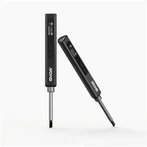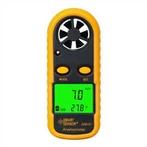Method of using a multimeter to test frequency converters
1, Static testing
1. Test the rectification circuit to find the P and N terminals of the internal DC power supply of the frequency converter. Set the multimeter to resistance X10, connect the red meter rod to P, and connect the black meter rod to R, S, and T respectively. There should be a resistance value of about tens of ohms, and it should be basically balanced. On the contrary, connect the black meter rod to the P end, and then connect the red meter rod to R, S, and T in sequence, with a resistance value close to infinity. Connect the red rod to the N end and repeat the above steps to obtain the same result. If there are the following results, it can be determined that the circuit has malfunctioned,
A. The three-phase imbalance of resistance values can indicate a fault in the rectifier bridge.
B. When the red meter rod is connected to the P terminal and the resistance is infinite, it can be concluded that there is a fault in the rectifier bridge or a fault in the starting resistor.
2. Test the inverter circuit by connecting the red meter rod to the P terminal and the black meter rod to the U, V, and W terminals respectively. There should be a resistance value of several tens of ohms, and the resistance values of each phase should be basically the same. The reverse phase should be infinite. Connect the black meter rod to the N terminal and repeat the above steps to obtain the same result. Otherwise, it can be determined that the inverter module is faulty. Secondly, dynamic testing can only be carried out after the static test results are normal, that is, power on the machine for testing. Before and after powering on, the following points must be noted:
1. Before powering on, it is necessary to confirm whether the input voltage is correct. Connecting a 380V power supply to a 220V level frequency converter may cause the machine to explode (capacitors, varistors, modules, etc.).
2. Check if the various broadcast ports of the frequency converter are properly connected and if there is any looseness in the connections. Abnormal connections may sometimes cause faults in the frequency converter, and in severe cases, it may lead to machine explosions and other situations.
3. After powering on, detect the fault display content and preliminarily determine the fault and its cause.
4. If no fault is displayed, first check whether the parameters are abnormal, reset the parameters, start the frequency converter under no-load (without connecting the motor), and test the output voltage values of U, V, and W phases. If there is a phase loss, three-phase imbalance, etc., the module or driver board is faulty
5. Under normal output voltage (no phase loss, three-phase balance), perform load testing. During testing, it is recommended to conduct a full load test.






